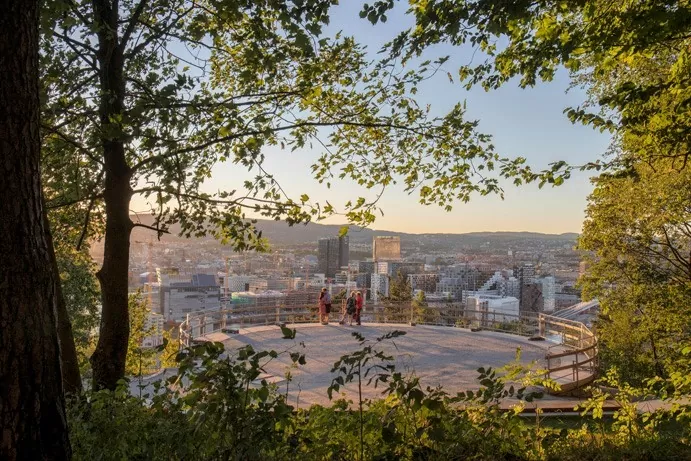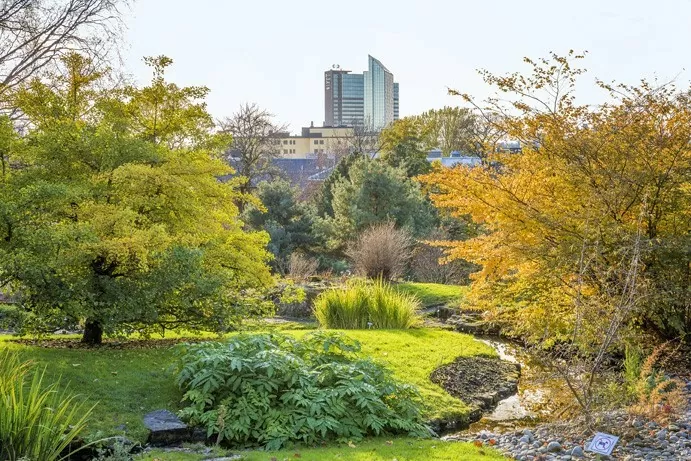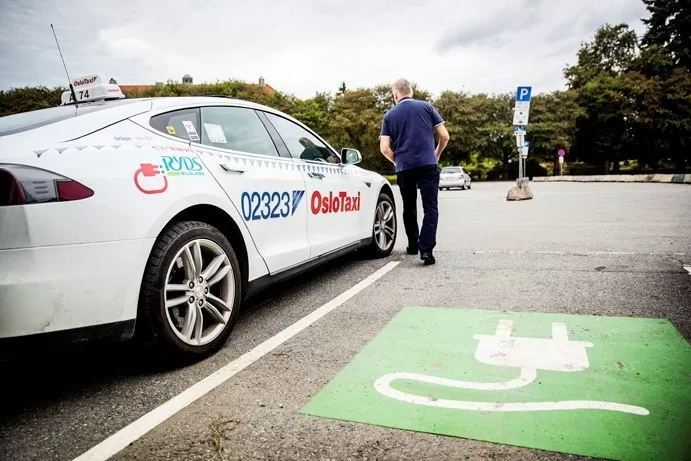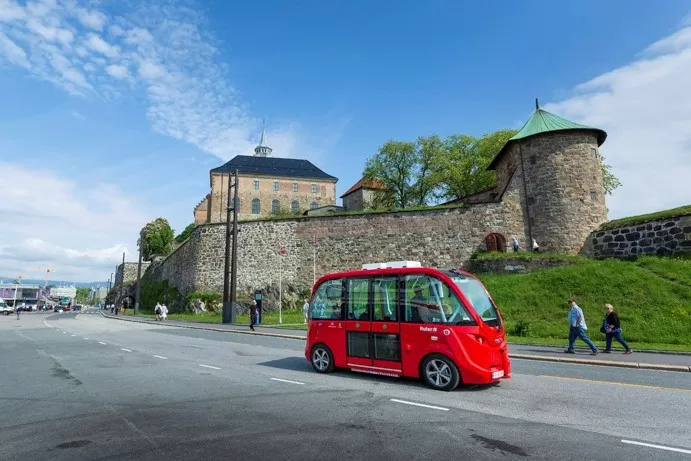Baoquocte.vn. With a population of less than 1 million people, Oslo, the capital of Norway – a beautiful Nordic country – is striving to achieve green transformation goals and proving to be a prime example of realizing green goals in real life.
 |
| The verdant beauty of Oslo from a city vantage point. (Source: Sustain Europe) |
"Lack" of noise
Through progressive policies, innovative initiatives, and community participation, the story of the European Green Capital 2019 is a valuable lesson for urban governments around the world striving for sustainable urban development.
Oslo aims to achieve carbon neutrality by 2030. To realize this goal, considered the most ambitious in the world, the city has been implementing numerous measures to reduce greenhouse gas emissions across various sectors.
 |
| A green park in Oslo. (Source: Sustain Europe) |
These days, when you pass by a construction site in Oslo, you'll still see the familiar sights: neatly stacked piles of building materials, construction workers diligently toiling on the site and on excavators... However, you'll notice the absence of one easily recognizable characteristic of any construction site - noise.
This is one of the results of the Climate Budget, which Oslo pioneered in 2017. Accordingly, environmental targets are integrated into annual financial plans, enabling authorities to measure and monitor greenhouse gas emission reductions across sectors throughout the budget cycle. Construction, transport, and waste incineration – which account for approximately 90% of the city's total emissions – are among the priority sectors.
 |
| In 2023, electric vehicles accounted for 70% of all cars sold in Oslo. (Source: Sustain Europe) |
Oslo aims to create the world's first zero-emission construction sites. The city has implemented many innovative solutions in the construction industry, such as using only electric excavators and equipment, converting diesel-powered excavators to electric and battery-powered ones, using electric heavy construction equipment, and adopting zero-emission technologies.
Climate budgets are the world's first initiative of this model and are seen as a groundbreaking tool to help city governments address the problem of urban emissions.
Electric vehicle capital
In the field of public transport, Oslo is at the forefront of adopting green solutions, prioritizing pedestrians and cyclists, and promoting the energy transition for public transport, focusing primarily on electric vehicles (EVs).
 |
| Electric vehicle charging stations in Oslo. (Source: Sustain Europe) |
The city's public transport system, including trams, ferries, and buses, is now almost entirely electric, and the goal is for 100% of public transport vehicles to use renewable energy by 2030.
In 2023, electric vehicles accounted for 70% of all cars sold in Oslo, making it the global electric vehicle capital per capita. To encourage greater electric vehicle use, the city government has invested in and installed over 2,000 new charging stations for electric vehicles, while also implementing incentive policies such as reduced tolls, free parking, and improved access to bus routes.
In addition to efforts to electrify transportation, the city also encourages active commuting by expanding bicycle lanes. Since 2017, Oslo has built 100 km of new bicycle paths, significantly increasing the number of cyclists by 51%.
Buses powered by fuel from garbage.
Interestingly, Oslo's public bus system runs on fuel derived from organic waste. Currently, about 40% of residents' household waste is recycled, and this percentage is expected to continue to rise. Reusing and recycling waste are measures that the Oslo city government is implementing instead of traditional methods to manage waste more effectively, promote circularity in the economy , with the goal of reducing per capita waste by 30% by 2030.
 |
| Public buses in Oslo run on fuel extracted from organic waste. (Source: Sustain Europe) |
One of the reasons Oslo was chosen as the European Green Capital in 2019 is its abundance of green urban spaces: large parks, botanical gardens, tree-lined streets, and clean air. This has encouraged residents to participate more actively in the green transition process because they are the direct, daily beneficiaries of these efforts.
Oslo remains committed to its goal of achieving carbon neutrality by 2030. Oslo's story has inspired, and will continue to inspire, many other cities and capitals around the world in their green transitions to reduce their carbon footprint, improve the quality of life for their citizens, and spark global action for a greener future for all.
Source: https://baoquocte.vn/thu-do-oslo-cua-na-uy-kien-dinh-บน-con-duong-xanh-300170.html


























![[Photo] Prime Minister Pham Minh Chinh attends the Conference on the Implementation of Tasks for 2026 of the Industry and Trade Sector](/_next/image?url=https%3A%2F%2Fvphoto.vietnam.vn%2Fthumb%2F1200x675%2Fvietnam%2Fresource%2FIMAGE%2F2025%2F12%2F19%2F1766159500458_ndo_br_shared31-jpg.webp&w=3840&q=75)










































































Comment (0)